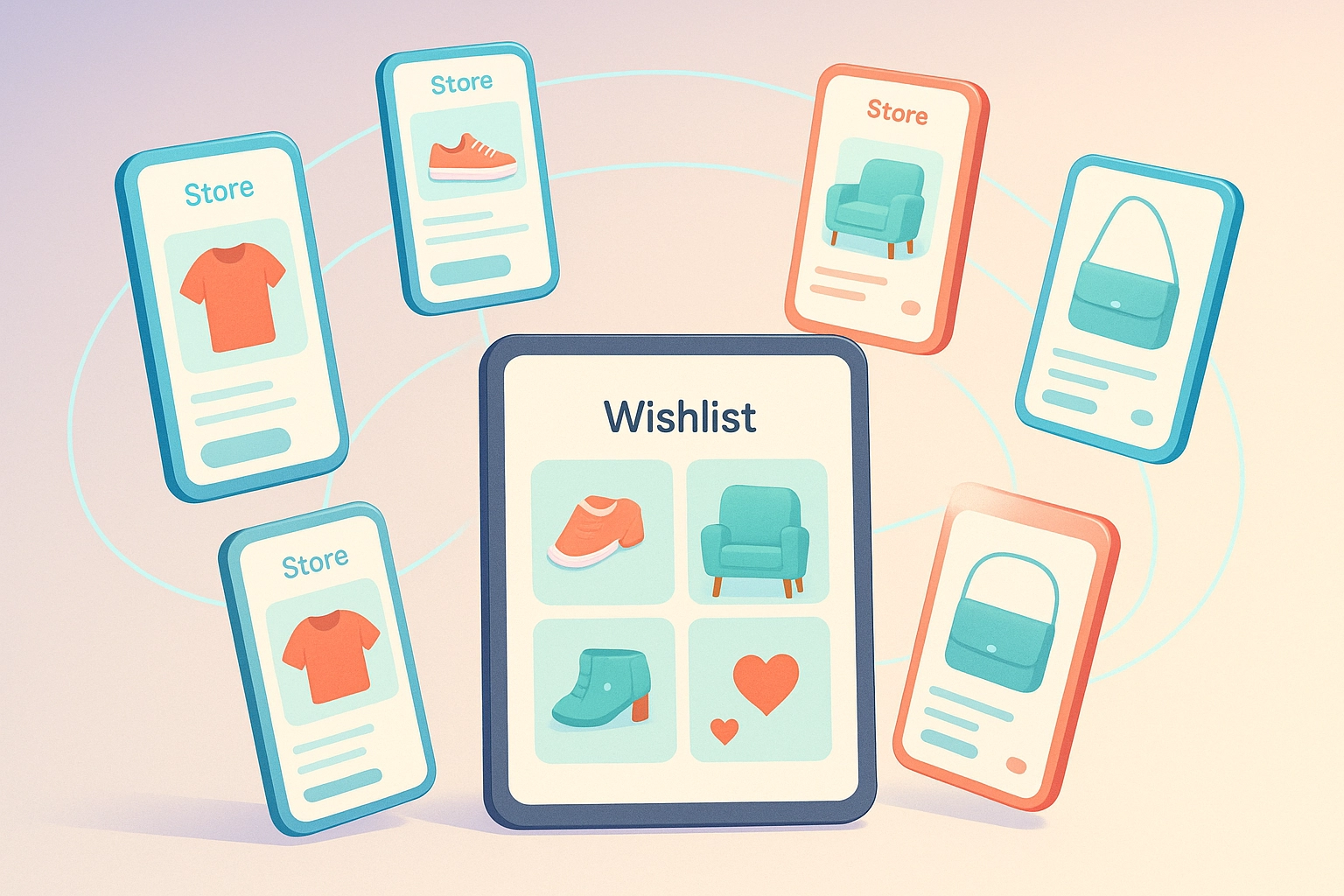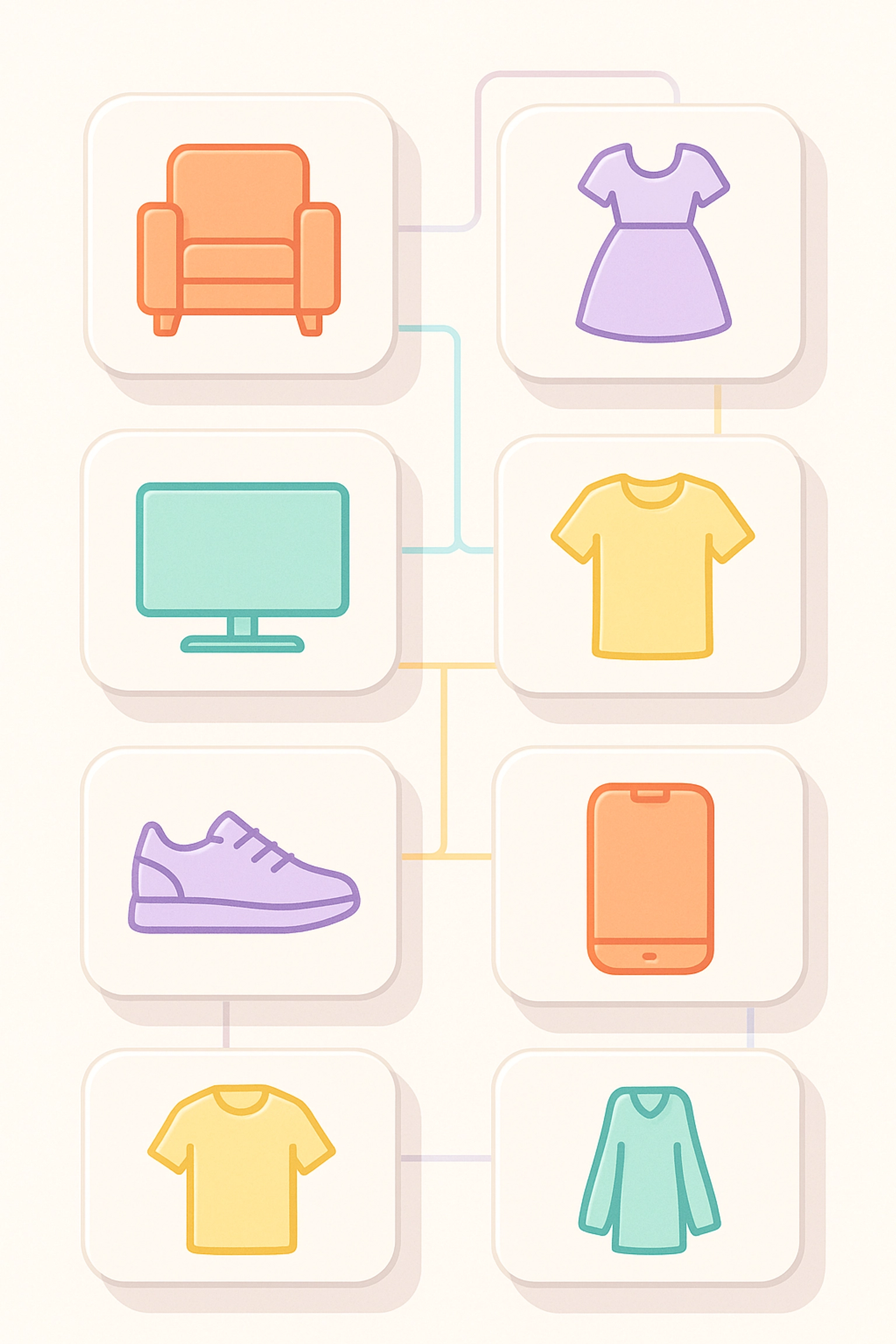Stop Wasting Money Shopping: Try These 5 Price Drop Alert Hacks
Most people think price alerts are just another annoying notification cluttering their phone. Here's the surprising truth: smart shoppers using strategic price drop alerts save an average of 30-40% on their purchases without changing what they buy: they just change when they buy it. The problem with traditional shopping isn't that we buy too much stuff. It's that we pay full price for things that will inevitably go on sale. While everyone else is playing the guessing game with sales cycles, sav

Most people think price alerts are just another annoying notification cluttering their phone. Here's the surprising truth: smart shoppers using strategic price drop alerts save an average of 30-40% on their purchases without changing what they buy: they just change when they buy it.
The problem with traditional shopping isn't that we buy too much stuff. It's that we pay full price for things that will inevitably go on sale. While everyone else is playing the guessing game with sales cycles, savvy shoppers are using price drop alerts to automate their savings and never miss a deal again.
Hack #1: Build Universal Wishlists Across Every Store
Traditional store-specific wishlists are dead-end streets. You're trapped in Amazon's ecosystem, Target's app, or Best Buy's platform, missing deals from hundreds of other retailers selling the exact same items.
Universal wishlists change everything. Instead of managing seven different apps with fragmented wish lists, you can track items from any online store in one place. When that $300 coffee maker you want goes on sale at Williams Sonoma, Crate & Barrel, or a random kitchen specialty site, you'll know immediately.
The strategic advantage becomes clear when you consider how retailers compete. That KitchenAid mixer might be $399 at Target but $329 at a smaller appliance retailer you've never heard of. Universal tracking means you capture these price variations across the entire market, not just the big-name stores.

Pro tip: Start by browsing through popular public wishlists to see what other smart shoppers are tracking. You'll discover items and retailers you never considered, expanding your savings opportunities immediately.
Hack #2: Set Strategic Price Thresholds, Not Random Alerts
Most people set price alerts wrong. They either choose completely arbitrary target prices ("I'll buy it if it drops to $50") or they wait for any discount whatsoever ("Tell me when it's on sale"). Both approaches waste money.
Smart shoppers research historical pricing data and set strategic thresholds. For electronics, this typically means targeting 20-30% below current retail price. For clothing and seasonal items, you can often achieve 40-50% savings by timing purchases correctly.
Here's the systematic approach that actually works:
- Research the item's price history across multiple retailers over the past 6-12 months
- Identify the lowest recorded price and set your alert 5-10% above that threshold
- Factor in seasonality - winter coats in March, outdoor furniture in September
- Consider your urgency timeline - can you wait 3 months or do you need it next week?
The psychological advantage is huge. Instead of impulse-buying when you see a random 15% discount, you're only notified when items hit genuinely good deals that align with historical data.
Hack #3: Track Entire Product Categories for Trend Identification
Individual item tracking is just the beginning. Advanced shoppers monitor entire product categories to identify broader pricing trends and spot opportunities before they become obvious.
When you track categories rather than individual products, patterns emerge. You'll notice that laptop prices consistently drop in August (back-to-school inventory clearance), outdoor furniture hits rock bottom in October, and fitness equipment plummets in March (post-New Year resolution reality check).
This macro-level intelligence transforms your shopping strategy. Instead of waiting for one specific treadmill to go on sale, you're monitoring the entire fitness equipment category and can pivot to the best available deal when the market shifts.
Category tracking also reveals substitute opportunities. That $800 stand mixer you want might never hit your target price, but a comparable model from a different brand within the same category could deliver 90% of the functionality at 60% of the cost.
The compound effect is remarkable. You're no longer just getting good deals on individual items: you're developing market timing skills that save money across every purchase category.
Hack #4: Leverage Social Proof Through Community Wishlists
Here's something traditional price alerts miss entirely: the collective intelligence of other smart shoppers. While you're tracking items individually, thousands of other people are monitoring the same products, creating a powerful early warning system for exceptional deals.
Community-driven wishlists reveal several critical insights:
- High-demand items that are likely to sell out quickly when sales happen
- Hidden gems from lesser-known brands that deliver premium quality at budget prices
- Seasonal timing patterns based on real purchasing behavior, not marketing calendars
- Price anomalies that might indicate inventory clearances or pricing errors
When you see an item appearing on multiple public wishlists, it's usually a signal. Either the product offers exceptional value, or experienced shoppers know something about upcoming promotions that isn't public knowledge yet.

The network effect multiplies your savings potential. Instead of relying solely on your own research and timing, you're benefiting from the collective market intelligence of an entire community of price-conscious shoppers.
Hack #5: Automate Purchase Decisions with Pre-Set Buying Rules
The biggest leak in most price alert systems isn't the technology: it's human hesitation. You get the perfect alert, then spend three days "thinking about it" while the deal expires or inventory sells out.
Smart shoppers eliminate decision fatigue by establishing clear buying rules before they start tracking items. This means defining specific criteria that automatically trigger purchases when met:
- Target price threshold - "Buy immediately when price drops below $X"
- Quality benchmarks - "Must have 4+ stars with 100+ reviews"
- Availability windows - "Purchase within 2 hours of alert to avoid sellouts"
- Budget constraints - "Maximum $500 total spending per month on tracked items"
This systematic approach removes emotions from purchase decisions. You've already done the research, set rational price targets, and established quality standards. When alerts fire, you're executing a pre-planned strategy, not making impulse decisions under time pressure.
The psychological benefit is huge. You eliminate buyer's remorse because every purchase aligns with predetermined criteria you established during calm, rational planning sessions.
Advanced Integration: Collections for Seasonal Planning
Taking price alerts to the next level means thinking beyond individual purchases toward complete seasonal or project-based shopping strategies. Collections allow you to group related items and optimize your purchasing timing across entire categories.
For example, a "Home Office Upgrade" collection might include a desk, chair, monitor, lighting, and organizational accessories. Rather than buying items randomly as they go on sale, you can track the entire collection and strategically time purchases to maximize savings across the complete project.
This approach reveals optimization opportunities that individual item tracking misses. Maybe the desk you want never hits your target price, but the chair and monitor both drop significantly in the same week. You can reallocate your budget dynamically and potentially upgrade to better items within the same total spending limit.

The Compound Effect: Why This Actually Matters
Price drop alert strategies aren't just about saving money on individual purchases. They're about developing a systematic approach to consumption that compounds savings over time while improving purchase satisfaction.
Consider the average household that makes 50-75 non-grocery purchases per year. Traditional shoppers pay full retail price on roughly 80% of these items. Smart shoppers using strategic price alerts typically achieve meaningful discounts on 60-70% of their purchases.
The mathematics are compelling:
- Average household annual spending: $15,000-20,000 on non-grocery items
- Traditional approach: 10-15% total savings through random sales and coupons
- Strategic price alerts: 25-35% total savings through systematic market timing
That's the difference between saving $1,500-2,250 per year (traditional) versus $3,750-7,000 per year (strategic approach). The gap widens over time as you develop better market timing instincts and expand your tracking sophistication.
More importantly, strategic price alerts improve purchase satisfaction. You're getting better products at lower prices, reducing buyer's remorse, and developing confidence in your spending decisions. The psychological benefits often exceed the financial savings.
Getting Started: Your Next Steps
The barrier to implementing these strategies isn't technical complexity: it's changing your relationship with purchase timing. Most people buy things when they need them. Smart shoppers buy things when the market conditions are optimal.
Start with these actionable steps:
- Identify your next 5-10 planned purchases and add them to a universal wishlist
- Research historical pricing for each item to establish realistic target thresholds
- Browse community wishlists to discover alternative products and retailers
- Set up category tracking for your most frequent purchase types
- Establish clear buying rules that eliminate decision paralysis
The goal isn't to become obsessed with deal-hunting. It's to develop systematic approaches that save money automatically while improving your overall shopping satisfaction.
Start building your strategic advantage today. The sooner you begin tracking market patterns and price movements, the sooner you'll stop paying full retail price for items that will inevitably go on sale.
Ready to create your wishlist?
Start building beautiful wishlists that work everywhere.